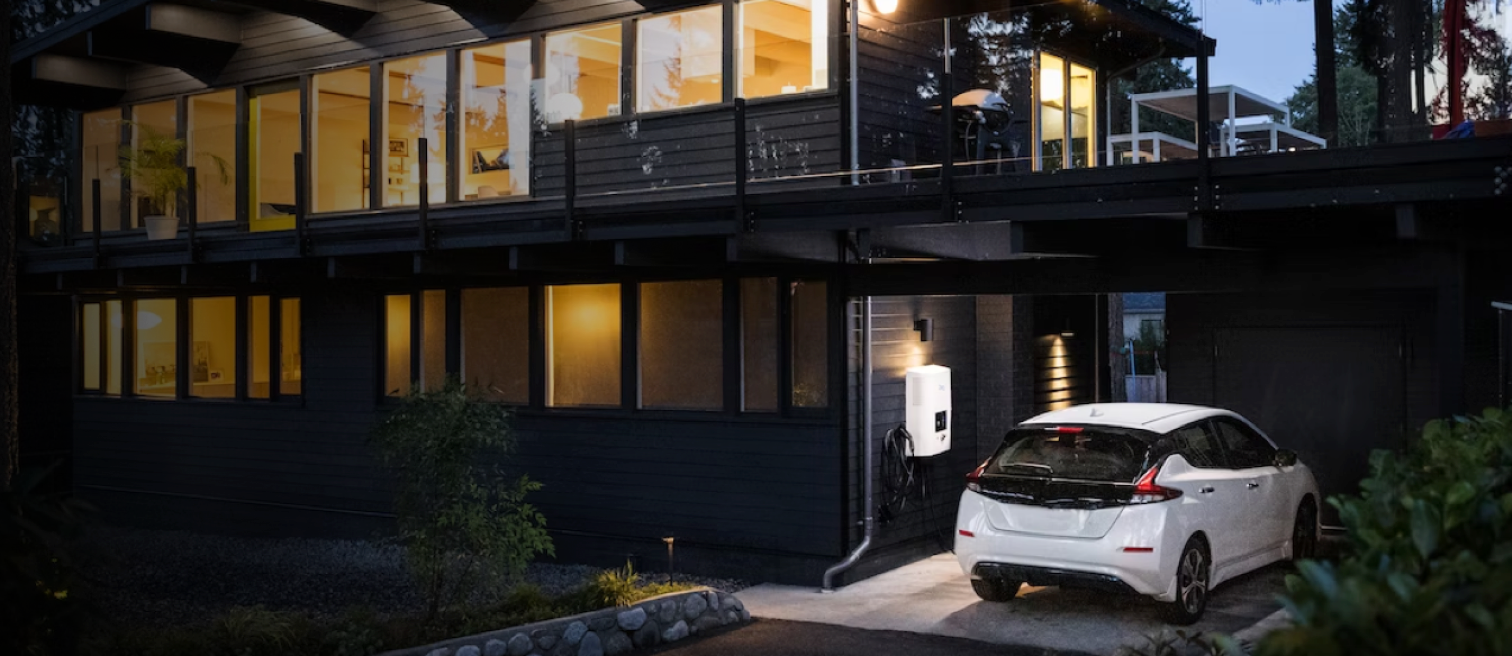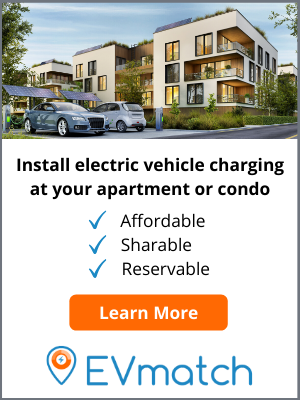Blog
The Importance of Managed EV Charging
November 30, 2022
Post Author

Managed EV charging can enable dozens of beneficial features to EV chargers such as access control, payment processing, data reports, demand response eligibility, and more. Here we break down the benefits of managed or “smart” charging to drivers, property owners, utilities, and society at large.
When the modern-day electric vehicle (EV) first emerged around ten years ago, EV charging infrastructure was in its infancy. The charging stations that were installed were quite simple in design and operation, and did not connect to a Wi-Fi or cellular network. While this was cost effective in the beginning, over time the disadvantages began to stack up. This older type of charging station is considered non-managed/non-networked/non-smart and does not provide the advanced features or capabilities that managed/networked/smart EV chargers do.
Fast forward a few years and the number of features that now come with managed EV chargers is quite extensive. This is because managed EV chargers are software driven, so new features are continuously added over time similar to smart phones. As a result, managed EV chargers are capable of solving a multitude of problems non-managed EV chargers couldn’t solve. In fact, most new charging stations installed today are managed for these many benefits.
As installing EV charging stations requires significant capital expenditure, site hosts want to make sure that they have access to ever-improving software through over-the-air updates. The last thing they want is to install infrastructure only to learn later that has become outdated and is no longer able to service the latest crop of EVs effectively
So what is managed EV charging?
What is Managed EV Charging?
Managed EV charging, also called networked, smart, or software-enabled, allows site hosts to fully control and operate EV chargers to fit their specific needs.
EV chargers that are managed have advanced features such as access control or payment processing to allow site hosts to operate the chargers in a way that aligns with their specific needs and business model. These types of chargers are connected to the internet via Wi-Fi or cellular connections. Managed EV charging provides many features such as access control, payment processing, reservations, over-the-air updates, charger diagnostics, online operations portal, reservations, wait lists, utility demand response program enlisting, data reports, monitoring, vehicle-to-X (V2X), and much more.
In order to take advantage of managed EV charging, the right type of charger must be used. Only certain charging hardware is compatible. Popular network-capable charging equipment includes the Wallbox Pulsar Plus and the Enel X Juicebox Pro. There are several others, so it is recommended to check with the manufacturer or your installer to ensure compatibility with a Wi-Fi or cellular network.
Why is Managed EV Charging Important?
As an EV charging site host, it is important to oversee the operations of the chargers to ensure proper and intended use. For EV chargers at multi-unit housing developments, such as an apartment complex, property managers want to make sure that each tenant is able to access and pay for charging as needed. Without charger networking, there would be no easy way for apartment dwellers to pay for the chargers, which would leave the property owner on the hook for all of the electricity costs. Over time, these costs can stack up, especially if charging is taking place during peak pricing hours.
For chargers at hotels, Airbnbs, and other vacation rentals, managers may want to restrict access to guests only, or only allow public access at certain hours. Without networking, the chargers would be available for use to anyone, including the public. Guests planning on charging their EV at the hotel may find the charger being used by someone who is not a hotel guest, which could be especially frustrating on long road trips when overnight charging is essential. Networked chargers enable access controls for specific user types, and management software, such as EVmatch’s platform, allows owners to set schedules and prices for distinct user groups (e.g. guests versus the general public).
For chargers at workplaces, office managers want to ensure their employees and/or company fleets are able to charge on a daily or weekly basis. Some employers may even offer free charging as an employer perk similar to free coffee or a health stipend. With managed EV charging, office managers can rest assured that their employees or fleet vehicles have seamless access to the chargers via RFID cards or app pre-authorization. Additionally, the office manager can charge different rates for different groups of individuals, such as the general public, employees, and fleet vehicles. And with EVmatch’s reservation software, employees can easily schedule their workplace charging sessions at specific times, minimizing any negative impacts on workday productivity.
There are several other examples. In each of these cases, having a managed EV charging station allows the site host to control the operation of the chargers to fit their needs. This cannot be done without a networked charger.
What is Demand Response?
As mentioned previously, one of the features of a networked EV charger is that it is capable of enrolling in a utility demand response program. Demand response programs are an increasingly popular and inventive ways for utilities to ensure grid stability during peak usage. It works like this:
- The utility company offers customers a discounted electricity rate or credits for enrolling in the program.
- Whenever the grid usage is at its peak, the utility notifies the customer of a demand response event.
- The customer will then reduce electrical loads, such as EV charging stations, to a pre-specified amount.
In a pilot project with Southern California Edison in 2018, participating sites were able to reduce electrical load by 42%. With managed EV charging, this can be done automatically saving time and ensuring program compliance.
In fact, the International Energy Agency (IEA) predicts by 2050 around 15% of average electrical demand can be shifted by demand response strategies. Overall, demand response is critical for our energy future as we shift towards full electrification.
How Does Demand Response Play a Role with EV Charging?
With demand response, EV charging site hosts can offer cheaper charging and/or increase revenue. For certain sites, this additional revenue can add up to a significant amount. Since demand response events only occur a select number days each year (typically on hot summer days), it will not disrupt normal charging operations on a regular basis. Once the peak demand event is over, the EV chargers operate at normal conditions.
Per a demand response study by Opinion Dynamics, only 2 of the 212 Pacific Gas and Electric Company (PG&E) program participants dropped out. Since most residential EV charging takes place overnight when energy demand is low, demand response events do not typically affect charging schedules. Therefore, demand response events, which occur usually around 4 PM to 8 PM, do not dramatically affect typical residential charging schedules. During brownout events, EVs are mistakenly blamed when in reality air conditioning is the culprit as cooling loads skyrocket during extreme heat events.
Demand response is an important tool that utilities can activate to avoid blackouts or brownouts. It is important to note that not all electric utility companies currently offer this type of program, but the interest in EV demand response programs and ongoing pilots are growing.
What is V2X?
Vehicle to X (V2X), where X can be load (L), home (H), another vehicle (V), or the grid (G), is an emerging technology that can distribute stored energy to the device in need. V2X is also known as “vehicle to everything” or bi-directional charging.
Per the Department of Energy, “Bidirectional plug-in electric vehicles (PEVs) present immense potential for increasing the country’s energy security, resilience, economic vitality, and quality of life while supporting the electrical grid. A bidirectional EV fleet could serve as both a sustainable mobility option as well as an energy storage asset that sends power back to everything from critical loads and homes to the grid. A bidirectional fleet could also create new revenue opportunities for EV owners or fleets.”
Since EVs have an immense amount of stored electricity, with V2X, they can re-direct that power back to other things. V2X is an umbrella term where the “X” serves as a placeholder for many different use cases. It should be noted that while one EV may be capable of one type of V2X, such as V2V, it may not be compatible with a different type, such as V2H. Here is a breakdown of the different types of V2X:
V2L, where the “L” stands for “load”, re-directs power from the EV to other devices such as microwaves, power tools, outdoor lighting, refrigerators, and much more. V2L is currently included on EVs such as the Hyundai Ioniq 5, Ford F-150 Lightning, and Rivian R1T.
V2H, where the “H” stands for “home”, re-directs power from the EV to the home it is plugged in to. With a compatible V2H charger, electrical panel, and EV, during power outages, the EV can power the home. V2H is currently included on the Ford F-150 Lightning.
V2V, where the “V” stands for “vehicle”, re-directs power from the EV to another vehicle. If one EV needs more energy and a V2V-capable EV is nearby, that EV can plug into the other EV to charge the EV in need of juice. V2V is currently included on EVs such as the Hyundai Ioniq 5, Ford F-150 Lightning, and Rivian R1T.
V2G, where the “G” stands for “grid”, re-directs power from the EV back to the grid. Similar to the demand response program, the use of V2G can earn discounted electricity rates when the grid is strained and in need of additional power. Currently, this aspect of V2X is still being worked out with the utility companies, however, will soon be enabled for V2G-capable EVs.
| V2X | Use Case | Compatible EVs |
| V2L (Vehicle to Load) | Power external devices from an EV | Hyundai Ioniq 5, Kia EV6, Ford F-150 Lightning, Rivian R1T, Rivian R1S |
| V2H (Vehicle to Home) | Power a house during a power outage from an EV | Ford F-150 Lightning |
| V2V (Vehicle to Vehicle) | Charge an EV from another EV | Hyundai Ioniq 5, Kia EV6, Ford F-150 Lightning, Rivian R1T, Rivian R1S |
| V2G (Vehicle to Grid) | Re-direct electricity back into the grid during peak demand in exchange for discounted rates or credits | TBD |
How Does Managed EV Charging Play a Role with V2X?
For certain applications of V2X, such as V2G, proper equipment is required. This equipment will need to be able to handle the forwards and backwards flow of electricity to ensure both ends are properly suited to handle the electricity. In addition, a connected network is vital to oversee this process and ensure the equipment is functioning properly and as intended. Managed EV charging stations, like demand response, can earn additional revenue by sending power back into the grid during times when grid usage is at its peak. With all the stored energy in the EV battery, some of it can be sent back into the grid in exchange for discounted electricity rates or credits. Again, certain limitations and restrictions apply as well as variation with each utility company.
Overall, the opportunities to synchronize and leverage the charge and discharge of an EV’s massive battery are immense, and managed EV charging stations are a critical component in harnessing that potential.









